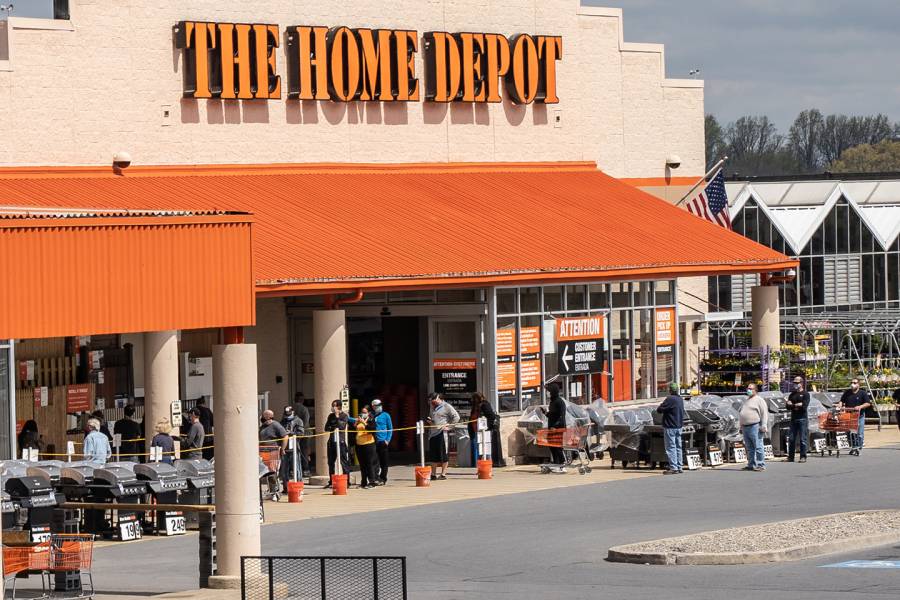As state governments weigh plans to resume economic activity against the threat of furthering the spread of COVID-19, some states have forged ahead with reopening plans while others hold firm with social distancing measures. To learn more about what strategies could promote continued compliance with long-term social distancing in states where those measures remain, the Hub reached out to Mario Macis, whose research focuses on the intersection of behavioral economics and public health. He is an associate professor of economics at the Johns Hopkins Carey Business School and affiliate faculty of the Johns Hopkins Berman Institute of Bioethics.
What factors encourage individuals, who might not feel sick, to comply with prolonged social distancing, even if it conflicts with their individual interests?
It's a combination of factors. The pandemic safety measures have highlighted how different populations are affected differently and respond differently to information and guidance. Those with secure jobs, who can work remotely and continue to receive their salary, are having an easier time complying, of course. Compare this to people who are unemployed or who are self-employed or business owners, those whose incomes are threatened or diminished. This is why social protection programs like the recent federal stimulus package are important.
Second is the extent to which people are willing to make personal sacrifices for the greater good—that is, the civic mindedness of the population. One feature of this experience is that individuals pay an immediate cost, but the benefits are not immediately perceived by the individual as they accrue to society more broadly. The benefits materialize only with a delay which can make it hard for individuals to comply with social distancing measures.
What might governments do to encourage people to continue following public health guidance?
Clear communication from the authorities, realistic expectations about the protracted nature of social distancing, and ensuring that the benefits of the actions we're all taking is evident are necessary strategies to encourage compliance. We should appeal to our collective civic mindedness, and we might even need to use fines and sanctions to discourage transgressors, though without going too far, of course.
The big takeaway from a study of a representative sample of Italians that I coauthored is that expectations matter a lot: people who expect the measures to last a relatively short period of time—a few weeks, for instance—are less willing to comply if the measures are extended for a longer period of time. We call this a "negative surprise." The opposite can also be true. People who expect measures to last for months but instead find out they will last for a shorter period of time might be more compliant.
The implication is that managing expectations is really important. We want to avoid making people believe that social distancing will end quickly when we cannot guarantee that because of the uncertainty about how long the measures will need to be in place.
Are there kinds of messages from the government that influence people's behavior adversely?
Mixed messaging never helps, and it's one potential reason for Italy's severe COVID-19 outbreak. In Italy we saw that different people had different expectations for how long the emergency would last. This is largely true in the U.S. as well. Recent polling from various sources indicates that although Americans now generally recognize that COVID-19 is a "major threat," Democrats are more concerned about it than Republicans are. This suggests that people are receiving different messages about COVID-19, and that they are placing different weights on them depending on their political leanings. This is worrisome if it leads to some people not taking the necessary precautions due to a false belief that the threat is not serious. The Italian experience shows this type of rift might have an adverse effect on compliance.
How can governments continue to balance public health and economic concerns?
In the U.S., we've seen that leaders did realize—some earlier, some later—that there wasn't really a tradeoff between the two. What I mean is that the pandemic is a public health challenge, but it is also a big threat to the economy. In order to avoid an even bigger economic collapse, social distancing has been necessary. Many economists have pointed out that what looks like a tradeoff is not a tradeoff at all—doing what's good for public health is also what's good for the economy. In March, economist Luigi Zingales produced a cost-benefit analysis of the economic shutdown, concluding that even under conservative estimates, cost-benefit calculations implied that it would be better to keep the economy closed to avoid the deaths that would occur from a rampant pandemic. Preserving public heath also means preserving our economic health.
Now we are in a slightly different moment, because we're starting to ask when is the appropriate time to reopen. It's clear that the cost of shutting down the economy is high and can't go on forever. The questions we should be asking our leaders are: "Are you taking advantage of this time and sacrifice we've made, how have you used it to prepare for the future? Have you positioned us to safely reopen and restart the economy?"
Posted in Health, Politics+Society
Tagged economics, economy, coronavirus, covid-19, social distancing










